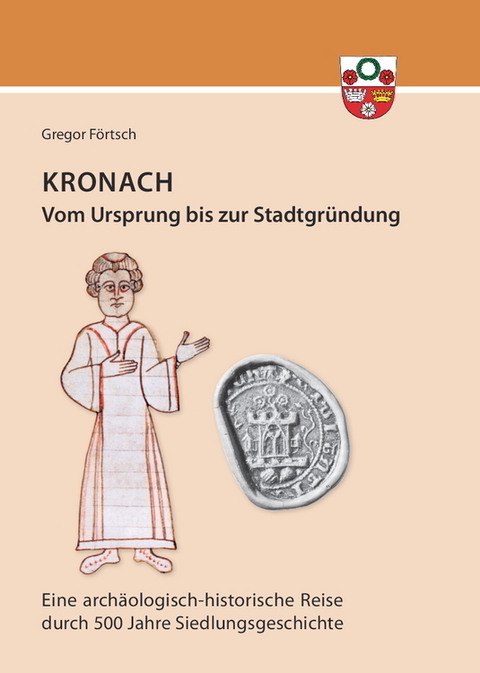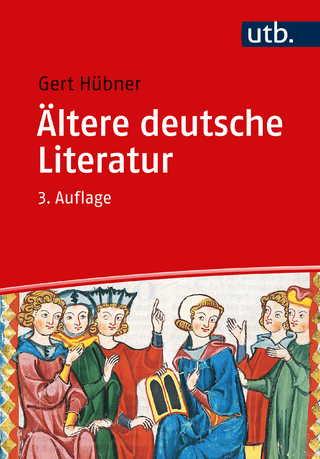Kronach – von seinem Ursprung bis zur Stadtgründung
Eine archäologisch-historische Reise durch die 500-jährige Geschichte der früh- bis hochmittelalterlichen Siedlung Cranaha, der Ursiedlung der Stadt Kronach im Frankenwald
Seiten
2023
|
1., Aufl.
VML Vlg Marie Leidorf (Verlag)
978-3-86757-070-1 (ISBN)
VML Vlg Marie Leidorf (Verlag)
978-3-86757-070-1 (ISBN)
Die Reste einer ca. 4,5 ha großen, früh- bis hochmittelalterlichen Siedlung mit gewaltigen Fundamenten einer salierzeitlichen Turmburganlage bei Friesen-Sand/Eichelberg im Stadtgebiet des 722 als villa cranaha ersterwähnten Kronach zählen zu den bedeutendsten Neufunden des Mittelalters in Oberfranken. Der 1989 entdeckte und 1992-2023 untersuchte Komplex konnte dank frühmittelalterlicher Keramik- und Metallfunde, die auf eine adelige Elite hinweisen, in die Zeit der Ersterwähnung zurückverfolgt werden. Ein großer Brand vernichtete um 1000 den hölzernen Herrensitz, wie auch Thietmar von Merseburg für 1003 zur urbs Crana berichtet. Das nachfolgende Steinerne Haus mit Wohnturm und Palas wurde dessen Vita zufolge vom hl. Bischof Otto I. von Bamberg 1122 errichtet. Mitte des 13. Jh. wurde die Anlage im Zuge einer Straßenverlegung aufgegeben und der prominente Name auf die neue Planstadt Kronach mit der Feste Rosenberg übertragen, die damit eine der ältesten archäologisch nachgewiesenen deutschen Städte ist. Die Siedlungsgunst des Platzes wird zudem durch die größte Ansammlung endneolithischer Funde in Oberfranken sowie metallzeitlicher Reste unterstrichen.
The remains of an Early to High Medieval settlement with some 4.5 ha in size and massive foundations of a motte and bailey of the Salian era near Friesen-Sand/Eichelberg in the city of Kronach, which was first mentioned as villa cranaha in A.D. 722, are among the most important new finds of the Middle Ages in Upper Franconia. The complex discovered in 1989 and investigated from 1992 to 2023 could be traced back to the time of its first mention thanks to Early Medieval pottery and metal finds that point to an aristocratic elite. A conflagrllation destroyed the wooden manor house around A.D. 1000, as Thietmar von Merseburg also reports for A.D. 1003 on the urbs Crana. The subsequent Stone house with a residential tower and hall was built by Bishop St Otto I of Bamberg in A.D. 1122, according to his vita. In the mid-13th century A.D., the site was abandoned in the course of a road relocation and its prominent name was transferred to the new planned town of Kronach with Rosenberg fortress, making it one of the oldest archaeologically documented German towns. The settlement favour of the site is underlined by the largest collection of Final Neolithic finds from Upper Franconia and Metal Age remains. The remains of an Early to High Medieval settlement with some 4.5 ha in size and massive foundations of a motte and bailey of the Salian era near Friesen-Sand/Eichelberg in the city of Kronach, which was first mentioned as villa cranaha in A.D. 722, are among the most important new finds of the Middle Ages in Upper Franconia. The complex discovered in 1989 and investigated from 1992 to 2023 could be traced back to the time of its first mention thanks to Early Medieval pottery and metal finds that point to an aristocratic elite. A conflagrllation destroyed the wooden manor house around A.D. 1000, as Thietmar von Merseburg also reports for A.D. 1003 on the urbs Crana. The subsequent Stone house with a residential tower and hall was built by Bishop St Otto I of Bamberg in A.D. 1122, according to his vita. In the mid-13th century A.D., the site was abandoned in the course of a road relocation and its prominent name was transferred to the new planned town of Kronach with Rosenberg fortress, making it one of the oldest archaeologically documented German towns. The settlement favour of the site is underlined by the largest collection of Final Neolithic finds from Upper Franconia and Metal Age remains.
The remains of an Early to High Medieval settlement with some 4.5 ha in size and massive foundations of a motte and bailey of the Salian era near Friesen-Sand/Eichelberg in the city of Kronach, which was first mentioned as villa cranaha in A.D. 722, are among the most important new finds of the Middle Ages in Upper Franconia. The complex discovered in 1989 and investigated from 1992 to 2023 could be traced back to the time of its first mention thanks to Early Medieval pottery and metal finds that point to an aristocratic elite. A conflagrllation destroyed the wooden manor house around A.D. 1000, as Thietmar von Merseburg also reports for A.D. 1003 on the urbs Crana. The subsequent Stone house with a residential tower and hall was built by Bishop St Otto I of Bamberg in A.D. 1122, according to his vita. In the mid-13th century A.D., the site was abandoned in the course of a road relocation and its prominent name was transferred to the new planned town of Kronach with Rosenberg fortress, making it one of the oldest archaeologically documented German towns. The settlement favour of the site is underlined by the largest collection of Final Neolithic finds from Upper Franconia and Metal Age remains. The remains of an Early to High Medieval settlement with some 4.5 ha in size and massive foundations of a motte and bailey of the Salian era near Friesen-Sand/Eichelberg in the city of Kronach, which was first mentioned as villa cranaha in A.D. 722, are among the most important new finds of the Middle Ages in Upper Franconia. The complex discovered in 1989 and investigated from 1992 to 2023 could be traced back to the time of its first mention thanks to Early Medieval pottery and metal finds that point to an aristocratic elite. A conflagrllation destroyed the wooden manor house around A.D. 1000, as Thietmar von Merseburg also reports for A.D. 1003 on the urbs Crana. The subsequent Stone house with a residential tower and hall was built by Bishop St Otto I of Bamberg in A.D. 1122, according to his vita. In the mid-13th century A.D., the site was abandoned in the course of a road relocation and its prominent name was transferred to the new planned town of Kronach with Rosenberg fortress, making it one of the oldest archaeologically documented German towns. The settlement favour of the site is underlined by the largest collection of Final Neolithic finds from Upper Franconia and Metal Age remains.
| Erscheinungsdatum | 12.12.2023 |
|---|---|
| Verlagsort | Rahden / Westf. |
| Sprache | deutsch |
| Maße | 160 x 240 mm |
| Gewicht | 900 g |
| Einbandart | gebunden |
| Themenwelt | Geschichte ► Allgemeine Geschichte ► Mittelalter |
| Schlagworte | Burg • Festung • Reitzeug • Siedlungskeramik • Stadtgeschichte • Turm |
| ISBN-10 | 3-86757-070-1 / 3867570701 |
| ISBN-13 | 978-3-86757-070-1 / 9783867570701 |
| Zustand | Neuware |
| Haben Sie eine Frage zum Produkt? |
Mehr entdecken
aus dem Bereich
aus dem Bereich
eine neue Geschichte des Mittelalters
Buch | Hardcover (2023)
C.H.Beck (Verlag)
38,00 €




